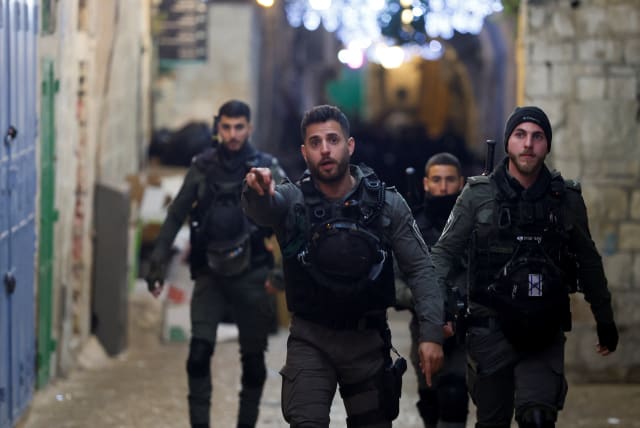Did Israel Police mess up, cover up Old City shooting? - analysis

The Post understands that Israel Police body cameras are generally off, and are only turned on in the case of a stop-and-frisk situation.
Controversy continues to rage over the Temple Mount shooting on Saturday night, when Muhammad al-Osaibi, an Arab-Israeli Bedouin, was shot and killed by Israel Police officers in Jerusalem’s Old City.
On Sunday night, police produced DNA evidence that Osaibi had seized a policeman’s gun and fired at a nearby policewoman. This supports the narrative that law enforcement has been pushing.
This could be decisive evidence, showing that Osaibi acted violently and that the police shot him in self-defense (although his shot missed the policewoman).
Osaibi deleted his social media accounts shortly before the incident, The Jerusalem Post has learned. He also canceled his smartphone service and switched over to a type of “kosher phone” as part of a process of becoming a more religious Muslim.
The incident began when Osaibi tried to enter an area on the Temple Mount that was already closed for the night, which is what first raised suspicions. But that is only half of the story.
Did an attempt to steal a police officer's gun actually happen?
DNA evidence, strong as it is, does not explain everything. Were there provocations from both sides, including police misconduct or harassment, as has been seen in other cases by police in Israel and in other countries?
We would know if there was any video evidence.
All of the nearby video cameras missed the incident, however, and all four police officers involved in the incident had their body cameras turned off. Body cameras are generally turned off and are only turned on for stop-and-frisk confrontations.
The police did not view Osaibi as serious enough for a stop-and-frisk, the Post has learned.
The police said they were merely guiding him away from their position, something they frequently do throughout the day without incident.
Perhaps the Israel Police will now reconsider this policy and keep their cameras rolling so that there will be clear footage of what happens.
Likewise, the suggestion that a set camera on a nearby gate would have caught the incident if it had occurred during daylight hours when the gate was open does not sound right, and it should be corrected following this incident.
This is not the first controversial incident to happen at night. If, indeed, the gate camera is useless when the gate is closed, then there is no evidence to verify different narratives for a third or more of each day.
The Post has also learned that the officers involved might not have been interrogated by the Police Investigations Department. If that is the case, such an omission could have massive ramifications and increase suspicions of a cover-up.
Currently, most of the hard evidence points to supporting the police narrative.
But the number of questions and prior mess-ups by the Israel Police should make the police rethink many of its policies if it wants to avoid more repeat accusations of cover-ups.
Jerusalem Post Store
`; document.getElementById("linkPremium").innerHTML = cont; var divWithLink = document.getElementById("premium-link"); if (divWithLink !== null && divWithLink !== 'undefined') { divWithLink.style.border = "solid 1px #cb0f3e"; divWithLink.style.textAlign = "center"; divWithLink.style.marginBottom = "15px"; divWithLink.style.marginTop = "15px"; divWithLink.style.width = "100%"; divWithLink.style.backgroundColor = "#122952"; divWithLink.style.color = "#ffffff"; divWithLink.style.lineHeight = "1.5"; } } (function (v, i) { });

